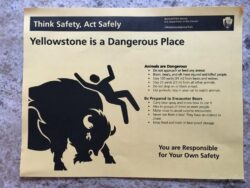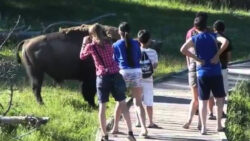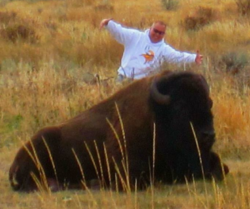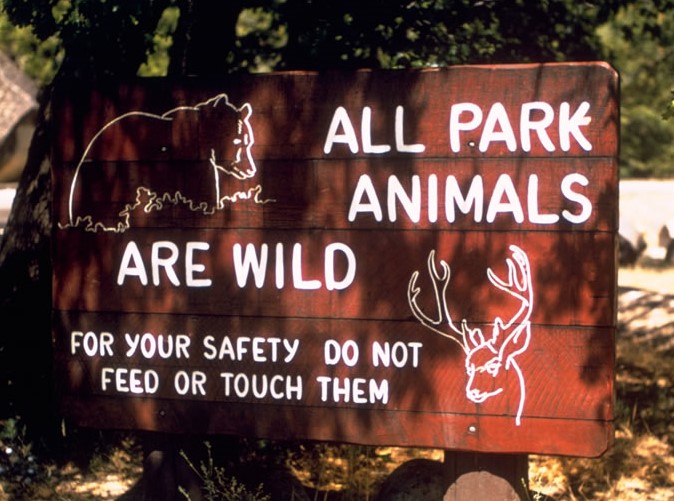Humans seem to have a need to touch and feel wildlife. The problem is that inappropriate touching and feeling are harmful. Recently, there have been several human wildlife encounters in Yellowstone National Park. One man felt that he needed to save a baby bison from swimming the river, another tourist saved a baby elk and delivered it to a Park Ranger office. Their well-meaning behavior ended tragically for the critters.
When other people get near us and start taking selfies with us, touch us, feel us, or just get too close, how do you feel and what would you do? If they pat, touch, and film your children or pets, how do you react? Do you begin filming them and post it on social media? Normally, Mama Bear lashes out, yells, growls, fights, or defends her territory, offspring, and personal space. It rarely ends well.
Buffalo can weigh 2,000 pounds and can run at a speed of 35 miles per hour. That means that they can cover 25 yards in 1.5 seconds. Yellowstone Park regulates the distance that you can be near bison at 25 yards. This is why so many tourists end up getting gored, trampled, and injured by these wild animals.
Yellowstone Park is having record visitation. The same buffalo is being infringed and photographed by hundreds of tourists. Animal behavior in critters or humans, has its breaking point. Elk weigh 1,000 lbs., bears are 500-1500 lbs., moose are over 1,500 lbs. Park rules require a safe distance of 100 yards. If an accidental physical encounter happens, humans will always lose when they get too close, touch, poke, prod, or violate the animal’s personal space.
Most tourists feel good about following the Park’s rules and regulations. Speed limits are respected until a personal need, like being late for work, happens. Then these people feel that they can be the exception to the rules. “I am on vacation and require special selfies and memories to display on my Facebook page.” These bragging rights become a habit. The perception they want to show is that they are brave, fearless, and an exception to the rules. The truth is that they are stupid and lucky. These posts and messages “influence” others to match or raise the bar. If the human loses and becomes injured, the animal pays the fatal price.
How could getting close to or touching wild animals be harmful? Animals live in a different world. When we visit the parks and wild places, we are in their living rooms. Encroaching leads to touching which leads to feeding which leads to…Wildlife will and do defend their offspring, territory, and space. Trespass, threaten, or get too close and there will be repercussions.
Humans have been entertained by animals incorrectly. In Disney Parks and cartoons, wildlife talks in multiple languages, wears clothes, and are so darn cute. In zoos, critters are incarcerated and kept in caged or safe areas. Safaris offer transport through dangerous wild critter habitat in a safe and protected armored bus or ride. Children hug animal dolls have loving pets at home and become fearless of all cuddly and cute critters.
Other tourists encourage bad behavior by filming the violator violating the wild critters personal space. Maybe if the filming is good enough, they may get paid by the media to use it. They should be calling the park rangers or discouraging bad behavior.
Violators have no clue what to look for when they are encroaching on a wild animal’s space. There are signals that should not be ignored. Body language is important. If the tail goes up, hair goes up on their backs, growls or grunts are obvious, posture for a lunge or charge are evident, smell, eye contact, and other messages should be alerting the tourist. Thes messages are saying Back Off!
Hunters and educated outdoorsmen understand “Wild” critters and their natural environments. They enter these places respectfully and carefully. They also pack weapons, bear spray, bells, or other proven gear to discourage wildlife encounters. Avoidance of dangerous encounters is their educated choice. Bad things can still happen.
If you love wildlife, leave it alone. Buy a post card, use long distance lens to take a picture, stay in your vehicles, don’t put the wonderful wild critters at risk. Your example should show others to do the same.
Nature knows best!
Montana Grant



